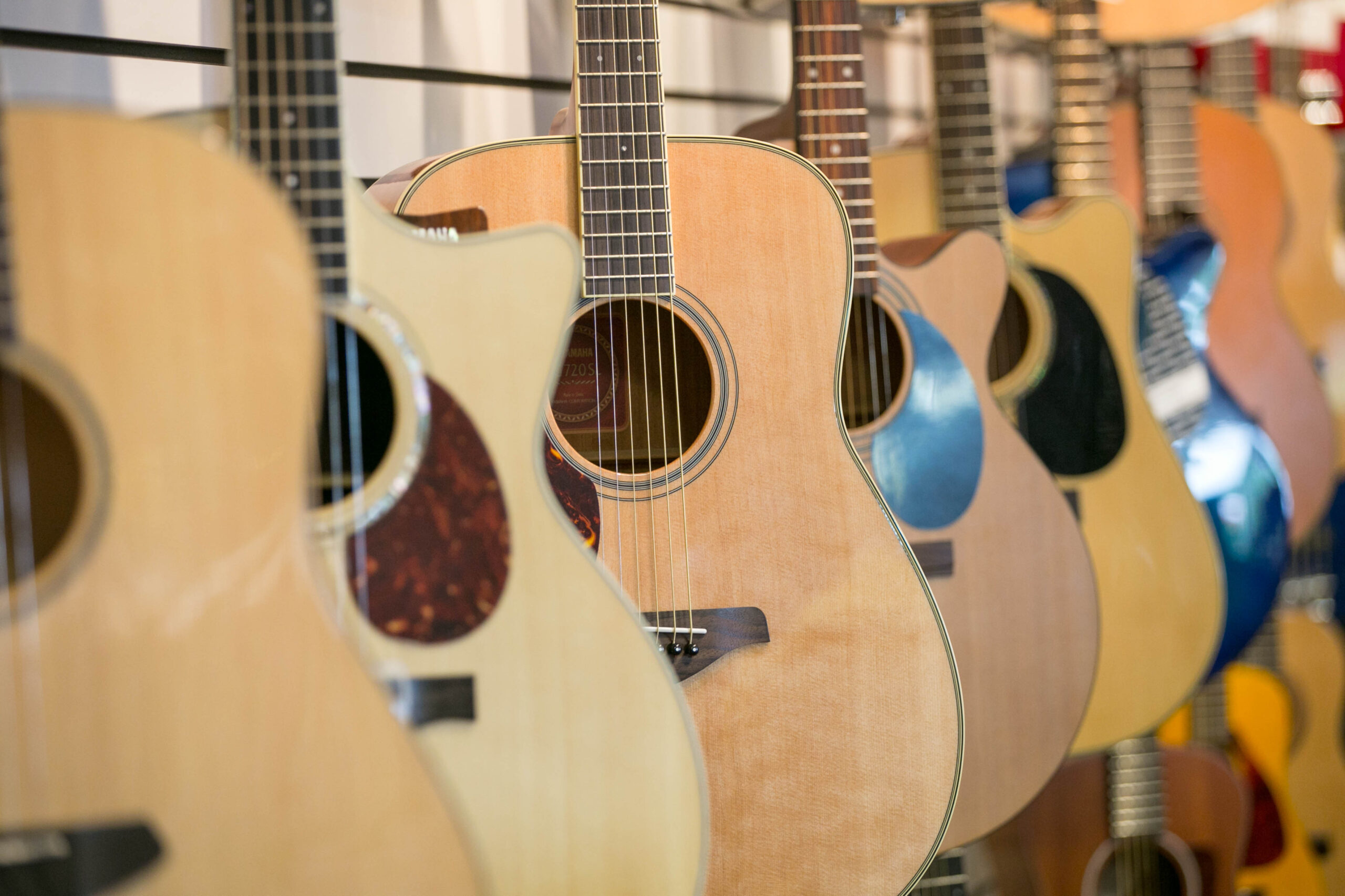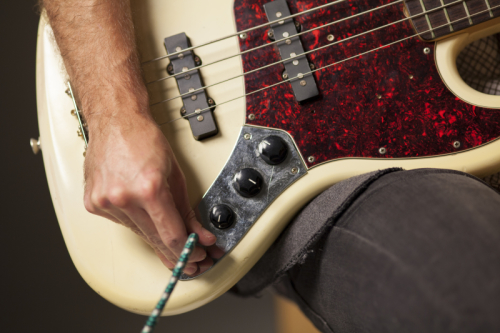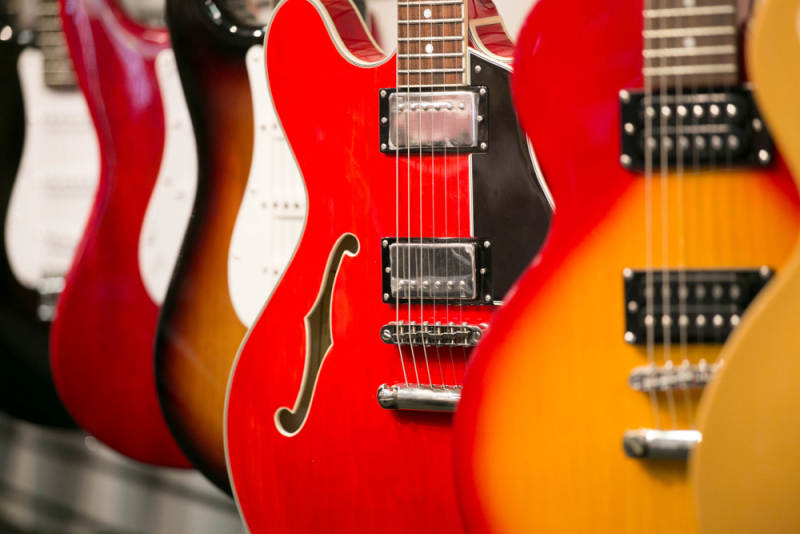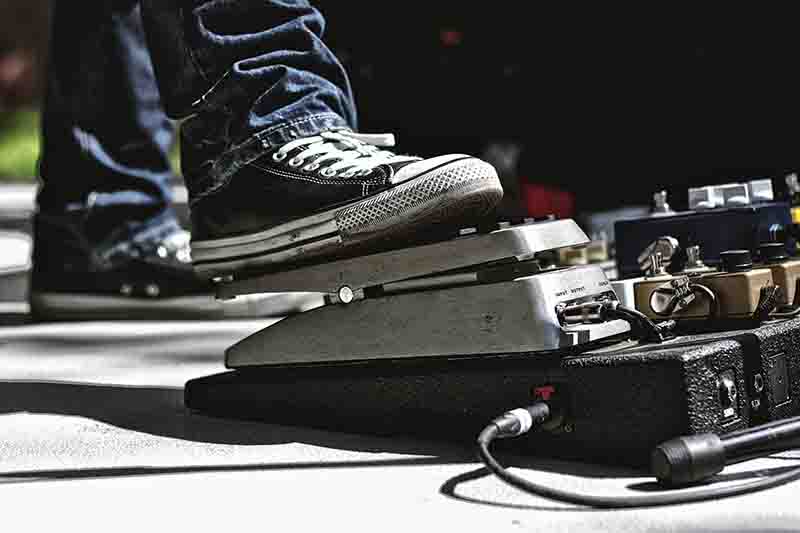April 09, 2015
A Parent’s Introduction to the Acoustic Guitar


If you have a child that’s learning to play the guitar, you’ve come to the right article. Motivating them to practice, teaching them how to properly care for an investment like a guitar, and keeping them on track are the goals. So go forth and educate! And happy shredding.
Basic Guitar Maintenance
Here is everything a parent needs to know about maintaining a guitar. Certain things need to happen less frequently, but if you follow this checklist, that new guitar will last many years!
Daily:
Storage
Keep the guitar in the case. A good sturdy case that fits the guitar snugly is recommended. When putting the guitar into the case, never leave the latches undone. This can result in the guitar accidentally falling out if they case is picked up before the latches are closed.
Temperature
Because a guitar is made of wood, it can be affected by temperature and humidity. Try not to expose the instrument to extreme temperatures if possible. Don’t store it in a musty basement or a hot attic. Never leave a guitar in a hot or cold car, as this can cause serious damage.
Cleaning the guitar
An instrument will maintain its beautiful finish longer if it is regularly wiped it down with a soft cloth. If there are a lot of fingerprints, try using guitar polish. DO NOT use furniture polish or anything abrasive. There are a lot of inexpensive guitar cleaning products available that are perfect for cleaning guitars.
Strings
Wipe down the strings every day after playing. This will remove the oils from fingertips and help the strings to last longer.
Monthly:
Changing strings
Change your strings fairly regularly. If the student is practicing every day, it’s probably a good idea to change them at least once a month. But if there are challenges getting the guitar to stay in tune, or if the sound feels flat or lifeless, try changing them sooner. Never detune or remove all of the strings at once. This can cause uneven tension on the neck that can lead to damage.
Annually:
There are other maintenance items that should be taken care of by a professional. Here are some of them:
- Truss rod adjustments keep the neck straight and even.
- Uneven frets can be smoothed or adjusted.
- Bridges and saddles sometimes need to be adjusted to improve the action, or the distance between the strings and the fretboard. A higher action can make it more difficult to press down on the strings. A lower action can lead to buzz as the strings vibrate against the frets.
After purchasing a new guitar it is smart to take it to a local shop or service center and have it “set up.” A professional will adjust many of the items mention above and more to make sure they guitar is in optimum playing condition.
It’s good practice to have a professional check the guitar out at least once a year to make sure everything is in tip-top condition.
Guitar Practice
How much should a guitar student practice?
First, remember that regular practice is more important than the amount of time per session. For example, 30-40 minutes every day is far more effective than four hours over the weekend and nothing in between.
Encourage students to practice at least 20 minutes per day or longer. It is also advised that you discourage sessions longer than an hour at once. This can lead to pain or stress injuries. If students want to play or practice longer, it’s best to take a break between 30-40 minute chunks of time.
Forming good habits
Sitting position
The student should sit on a chair with no arms and put his or her two feet on the floor, keeping the back straight. If they are right handed, the waist of the guitar should rest on the right leg and the back of the guitar should be held against the chest and stomach. The neck should be fairly horizontal to the floor.
The left hand should not be used to support the neck from dropping toward the floor. The right arm reaches over the top of the guitar body and helps to stabilize the guitar. Make sure the body is comfortable and relaxed and does not slouch over the top of the guitar. Resist the temptation of allowing the left elbow to rest on top of the left leg.
Left hand position (fretting hand)
The thumb of the fretting hand should rest behind the neck of the guitar. Bend all of the knuckles so fingers are curved and the very top of the fingertips are used to press against the strings. Fingernails must be kept short. Fingertips should be placed as close to the frets as possible without being on top of the actual fret. The first couple weeks of playing will result in soreness in the fingertips, but calluses will soon begin to form, making fretting much easier.
Right hand position (strumming hand)
Rest the right arm on the upper part of the guitar body, reaching around the guitar. The right hand floats comfortably above the sound hole, and the arm, wrist and hand should be relaxed.
Using a pick
The pick should held between the thumb and index finger. Place the pick on the side of the index finger and then hold it in place firmly with the thumb. Keep the rest of the fingers curved and relaxed. For small hands, it may be helpful to turn the pick so that a shorter side is used against the strings. This can encourage greater picking control and prevent the pick from hitting the body of the guitar.
Pick strumming technique
Relax the wrist and move up and down along the strings bending at the wrist. Do not lock the arm, moving only from the elbow. As the wrist bends, the elbow will move slightly as well. Strum down in a fluid motion, plucking each string along the way for a downstroke. Strum up in a similar fashion for an upstroke. Depending on the chord or desired effect, players may not always strike every string as they move up and down.
Speed bumps
These are the most common complaints you’ll hear from your child – the biggest excuses not to practice. Consult this guide to combat the issues, and keep on learning!
Finger pain
In the beginning the strings can hurt. There’s a narrow piece of wire pushing against sensitive fingertips. There are a few things that can help alleviate this. First, make sure the “action” is not too high. This can force the player to push down very hard on the strings and that hurts even more! Make sure the guitar is strung with light gauge strings. These are also easier to press and hurt less. And encourage students not to press the strings too hard. They only need to press hard enough to contact the frets. Pressing too hard can cause finger pain and make it harder to transition from chord to chord.
Encourage students to play regularly, but not too much. We don’t want blisters! As they play, over time callouses will build up on their fingertips and it will stop hurting. Also, fingernails on the left hand should be kept short, allowing the tips of the fingers to easily connect with the strings.
Note buzzing or muted notes
The trick to playing guitar notes clearly is to press the strings firmly at the correct fret while not touching any other strings in the process. This can be quite tricky for new learners and often notes will sound muted and dull. Make sure that fingers on the fretting hand are curved at every knuckle and that the tips of the fingers are used to connect with the strings. Proper posture helps as well.
Guitar size
Many young guitarists are physically too small to play a full-sized guitar. A ¾-sized guitar may just fit the bill, enabling players with smaller hands and shorter arms to succeed at fingering and strumming their instrument. As they grow, switch to a full sized guitar. Even as adults, pay attention to body and instrument size. Smaller adults may also find smaller body guitars more comfortable to play.
Continuity
It can take a while for students to be able to change from one chord to the next fluidly. This can be discouraging. There are some chords that require very little finger movement and are easier to move from one to the next. For example, changing from a C chord to an Am chord only requires the movement of one finger. Make sure your student has some success with easy chords, and then builds from there. It can take several weeks or months before they can play many chords fluently, and this requires regular practice.
Do you know other ways to motivate guitar students to practice?
Share your comments with us below! Let’s keep every child musician playing and loving their guitars!
Article written by Anthony Mazzocchi, Associate Director at Montclair State University and Executive Director at Kinhaven Music School.







